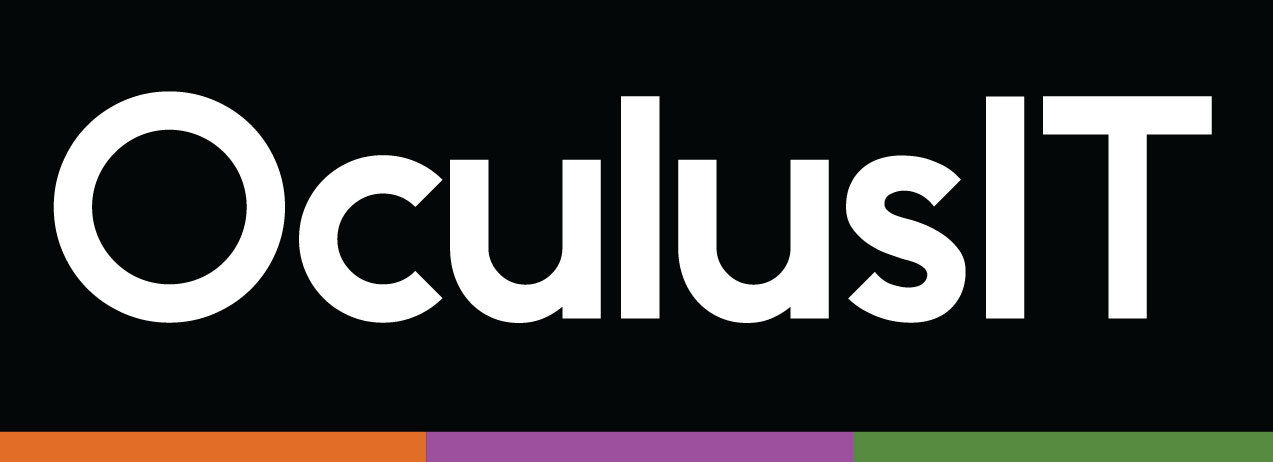
GLBA Compliance and Digital Evolution in Higher Education: Opportunities and Challenges
July 18, 2023
As higher education institutions embrace digital evolution, they unlock a plethora of opportunities to revolutionize teaching, streamline operations, and deliver enhanced learning experiences. However, amidst these technological advancements, critical regulatory compliance, including adhering to the Gramm-Leach-Bliley Act (GLBA), remains a top priority.
Decoding the nuances of GLBA is an ongoing challenge, even past the June 2023 compliance deadline. The OculusIT CISO team sat down to share their thoughts on how higher education institutions can successfully navigate GLBA compliance through digital evolution initiatives.
Strengthening Data Governance
Digital Evolution offers higher education institutions an opportunity to strengthen their data governance frameworks and ensure compliance with the Gramm-Leach-Bliley Act (GLBA). By establishing clear policies, procedures, and data management protocols, institutions can effectively govern the collection, storage, access, and sharing of student financial information. Between tuition payments, financial aid disbursements, student load administration, and other financial transactions, the implementation of robust compliance processes to protect constituents’ private financial guidelines is critical for adherence to GLBA.
Optimizing Compliance Processes in Higher Education
Digital Evolution offers higher education institutions the opportunity to streamline GLBA compliance processes. Automation and digitization reduce manual effort and enhance efficiency. Electronic recordkeeping, data mapping, and automated audit trails simplify compliance documentation and reporting. Technology solutions establish streamlined workflows, improving efficiency and enabling prompt responses to regulatory inquiries or audits.
Streamlined Operations
Digital Evolution in higher education often involves implementing centralized systems for managing financial data. The GLBA compliance requirements can guide the development of streamlined processes and secure information-sharing practices, leading to more efficient operations across departments and security across any financial data records.
Leveraging Data Analytics for Enhanced Compliance
Higher education institutions can leverage data analytics, AI, and machine learning to extract insights and trends from constituent financial data, proactively address compliance risks, and enhance GLBA compliance efforts in the digital era. Data analytics plays a vital role in monitoring compliance, identifying vulnerabilities, and driving process improvement.
Higher Ed Challenges for GLBA Compliance:
Complex Regulatory Landscape
In the digital world, higher education institutions face the difficult task of navigating through complex regulations. GLBA compliance requirements intersect with other regulations like the Family Educational Rights and Privacy Act (FERPA) and the Health Insurance Portability and Accountability Act (HIPAA). As a result, institutions must acquire a comprehensive understanding of these regulations and diligently ensure compliance on various fronts. Leadership and internal teams often find this overwhelming to manage on top of their daily priorities and simply don’t know where or how to start.
Data Governance and Data Mapping
Achieving GLBA compliance necessitates the establishment of a robust data governance framework and accurate data mapping internally. Since GLBA is known as the Financial Modernization Act, institutions must identify the types of financial information they collect, store, and share in digital form, and implement measures to protect this data throughout its lifecycle. However, achieving data transparency and accountability can be challenging. Institutions must map out their data flows to identify potential vulnerabilities and implement appropriate security measures to protect sensitive data. Maintaining thorough audit trails can simplify compliance documentation and reporting for data governance.
Ongoing Compliance Monitoring
Digitization introduces a dynamic environment that requires continuous monitoring to ensure ongoing GLBA compliance. Institutions must establish mechanisms for regular review, assessment, and updating of policies, procedures, and controls to address emerging risks, technological advancements, and changes in regulatory requirements in the context of digitization. By proactively identifying and addressing potential compliance gaps, colleges, and universities will enhance their data security measures and ensure continuous adherence to evolving GLBA guidelines. Ultimately these tenants build and maintain constituent trust, protect sensitive personal information, and mitigate the risk of regulatory penalties and reputation damage.
digital evolution has emerged as a valuable tool for higher ed institutions looking to optimize GLBA compliance processes. By leveraging automation and digitization, colleges and universities can streamline compliance efforts and enhance their overall efficiency. Higher education institutions must prioritize GLBA compliance while embracing digital evolution. Strengthening data governance, optimizing processes, streamlining operations, and leveraging data analytics are crucial. However, challenges must be addressed head-on to ensure successful compliance.
If you find maintaining GLBA compliance for your institution overwhelming, OculusIT is here to help. Contact us today to learn how we can support your institution in achieving and maintaining GLBA compliance as you embrace the opportunities of digital evolution. As higher education’s trusted partner, our team can support your institution on its journey toward a secure and compliant digital future.
Recent Articles







